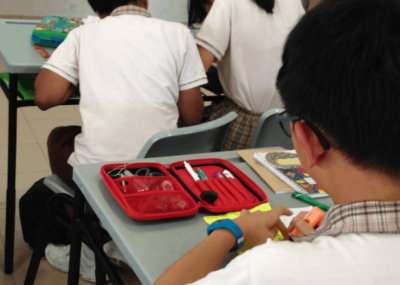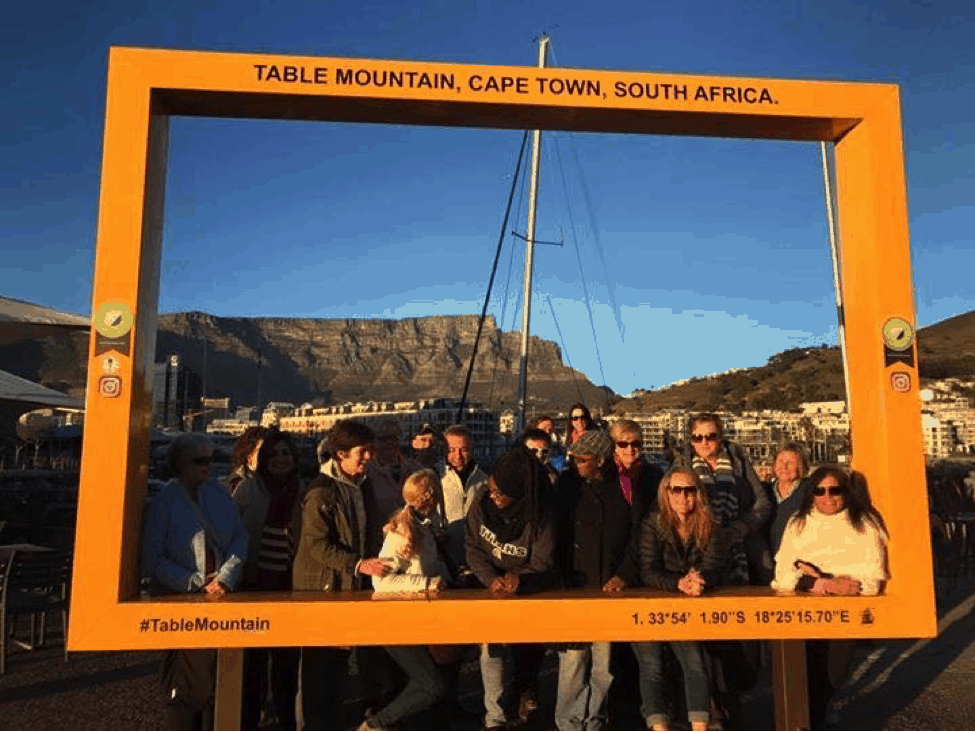

It was not lost on our group that our day of departure from Raleigh, North Carolina to Durban, South Africa was on June 16th, South Africa’s Youth Day. It is a most important day to remember the youth of South Africa who protested in Soweto on June 16th, 1976 in response to turmoil through the Bantu Education Act that called for racial segregation in schools.
Traveling with a group of 21 educators from across North Carolina with World View, a program through the University of North Carolina at Chapel Hill, to South Africa was an experience that will forever be one of the best times of my life. World View’s goal is to help educators become leaders in global education by looking beyond the borders of North Carolina and experience a culture, country and people different from your own. An unbelievable itinerary was scheduled packed with school visits, cultural immersions, and lots of laughter.
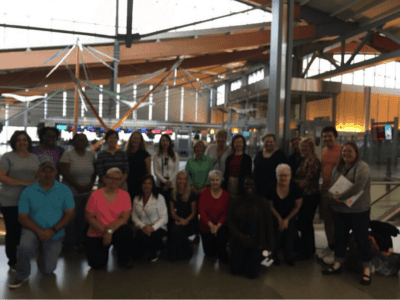

Our 17-hour direct flight to Johannesburg stopped only to refuel in Dakar, Senegal. We stayed on the plane while other passengers departed and new passengers arrived. After a short layover in Johannesburg, we continued on to Durban, a beachfront community rich in culture and history.
While in Durban, we visited St. Henry’s College, a Marist School, formed in 1929, as well as Durban Girls’ College. Both are independent schools. While at St. Henry’s, we participated in a lecture with the Kwazulu Natal Regional Director of the Independent Schools Association of Southern Africa (ISASA) to help us better understand the South African education system.
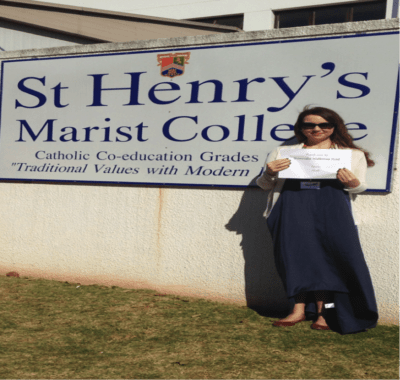

Visiting Livingstone Primary School helped our group better understand how South Africa reaches their special needs population. Livingstone serves only children with identified special needs and is meant to be a short-term remedial school for students who eventually mainstream back into their previous schools. Many families drive a long distance to have their children attend this school that is geared to meet their child’s individual needs.
One very interesting aspect of this school is that, while South African students wear uniforms, Livingstone gives their students flexibility with wearing shoes given that many students there have tactile issues. Many children are seen walking around the school barefoot.
Visiting LIV Village was a humbling, gripping experience for everyone. A home for orphaned and vulnerable children, it is a safe place for abused children to live with care givers, attend school and church, and receive medical care/therapy. In the area surrounding LIV Village, there is an 80 percent unemployment rate and it was shared with us that violence against children is a natural disaster in South Africa.
Another highlight of our time in Durban was having the chance take part in a Gandhi tour. We learned about his life as a young lawyer and how his experiences in South Africa were pivotal in developing his political presence through peaceful resistance. We stood where Nelson Mandela cast his vote in the country’s first all-race election at Ohlange High School in 1994.
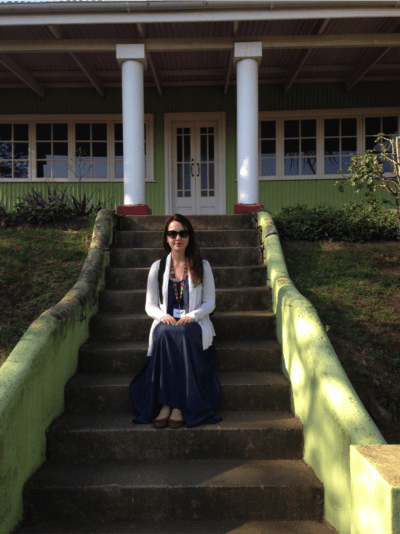

After several days in Durban, our group traveled to Cape Town. While in this amazing town with a backdrop of Table Mountain, we were continuously in awe of the culture, geography, and drop in temperature! With South Africa in the Southern Hemisphere, it was winter during our visit and quite chilly at times. Seeing penguins in their natural habitat at Boulder Bay, snapping pictures at the Cape of Good Hope, and observing the biodiversity on the West Cape left us with amazing memories of one of South Africa’s treasured cities.
Christo Brand, a prison guard turned friend of Nelson Mandela’s, enlightened us on what citizens endured in South Africa when they tried to abolish apartheid. Visiting Robben Island and being escorted by a former prisoner was a most humbling experience, particularly seeing Mandela’s tiny cell where he spent many years as a prisoner. Robben Island has a 500-year-old history and housed many political prisoners and freedom fighters.
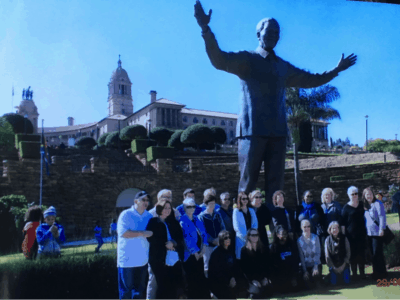

Traveling to the top of Table Mountain was a somewhat nerve racking experience for me personally as cable cars are not my most favorite method of transportation, but even I can admit the view was gorgeous. I can say that I was not reassured when the guide shared with us that we needed to make it back to the cable cars quickly if we heard an alarm. It would mean the wind was picking up too much and we would need to descend quickly!
While in Cape Town, we visited St. Joseph’s College, also a Marist school, Milnerton High School, as well as the offices of ISASA where we were able to meet with the executive director. We participated in an extensive dialogue about South Africa’s educational system, its successes and challenges, and their hope for the future of education.
After our time in Cape Town, we traveled back to Johannesburg and visited Spark Preparatory School, the Apartheid Museum, and the wonderfully resilient town of Soweto where we had lunch in the home of one of the residents. Meeting Hector Piterson’s sister at the Hector Pieterson Museum in Soweto was a surreal experience for our group. Our ventures down Vilakazi Street allowed us to view Nelson Mandela’s former home and the home of Archbishop Desmund Tutu, both Nobel Laureates.
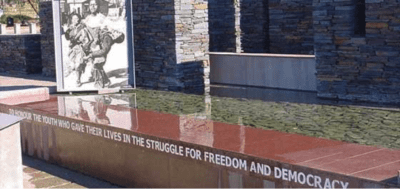

To culminate our time in South Africa, we went on both an evening and morning safari. Seeing elephants, zebras, impalas, hippos, rhinos, and even lions in their natural environment was one of the most gorgeous experiences I’ve experienced in my lifetime. We happened upon two lions that had just made a kill of a wildebeest and watched as they feasted on their success. Our last stop before our departure was in Pretoria. We were able to see Mandela’s life come full circle as we viewed where he took his inauguration as South Africa’s first democratic president.
Walking in Mahatma Gandhi’s footsteps, visiting many places of historic significance through the work of Nelson Mandela, seeing several of the “Big Five,” and conversing with numerous South African educators helped me reflect on our own education and culture in America.
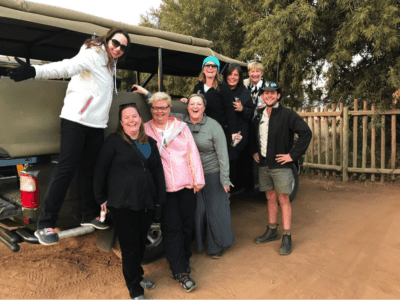

It is most often that I find we have more similarities than differences in education and how we all want what is best for our children. Our educational challenges are not bound by borders and working with educators around the world can enlighten us, challenge us, and help us all improve education for children, regardless of which country they call home.
Takeaways on South African education
- There are independent and public schools with large discrepancies between the two.
- Attendance at public schools is based generally on geography. Some children commute to attend schools not in their attendance area.
- Students wear uniforms in both independent and public schools.
- Many independent schools are members of ISASA.
- There are sharp contrasts in accountability, class size, and parent involvement between independent and public schools.
- There is predominately no public transportation for schools. If parents are unemployed, this is an obvious challenge for them to transport their children to school.
- School is compulsory from approximately 5-6 years old until students are 17-18. Students may exit school in grade 10 but many attend through grade twelve. Primary school consists of the first 7 years and high school, known as college in South Africa, is the remaining five years. There are programs for young children prior to beginning primary school.
- In order to attend school, ID documents are required and students must be registered. There are often issues with financial resources to register children. In many private hospitals, births are automatically registered but that is not always the case in public hospitals. This can present problems for children to attend school if their birth was not registered and parents may not be able to afford to do so.
- South Africa does have a national core curriculum.
- Matriculation exams take place in grade twelve and it was rare to hear this grade referred to by anything other than “matric.”
- School fees are typically required, even in public schools. Even if they are not required, they are often highly suggested. Families must purchase school uniforms. In some cases, there may be fee exemptions. School fees can help reduce class sizes in some cases.
- The constitution states that the independent schools of South Africa have the right to exist at their own expense and must be at least equal to public school education. If independent schools do not perform above average on given exams, they are not allowed to be a part of ISASA.
- Grades 3, 6, and 9 have national exams.
- Many public schools may have higher class sizes, may not have running toilets, and electricity may not always be available.
- During our meeting at ISASA, it was shared with us that 90 percent of the education budget goes to teachers. Education is where a significant amount of taxes go but there is still a disproportionate amount of resources in schools.
- While apartheid has ended, educators were very clear that they continue to deal with the repercussions of it in the educational setting, as well as throughout society.


